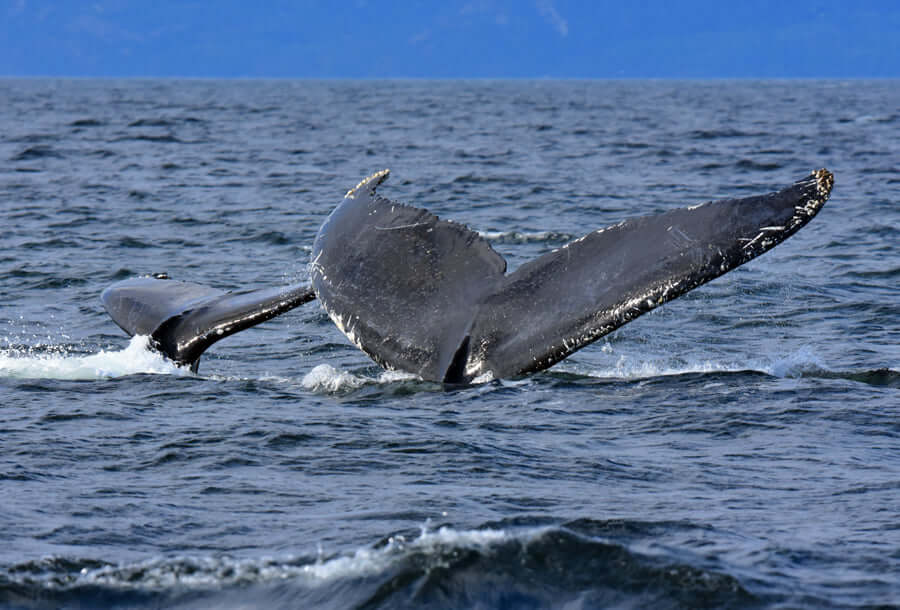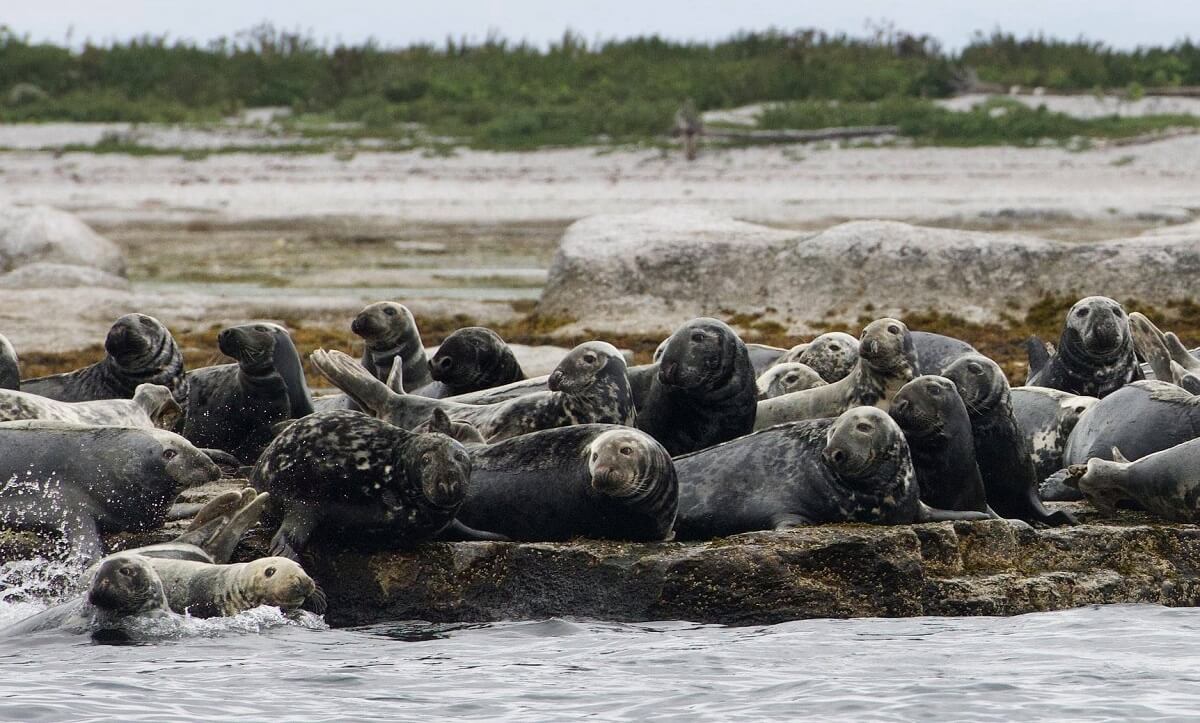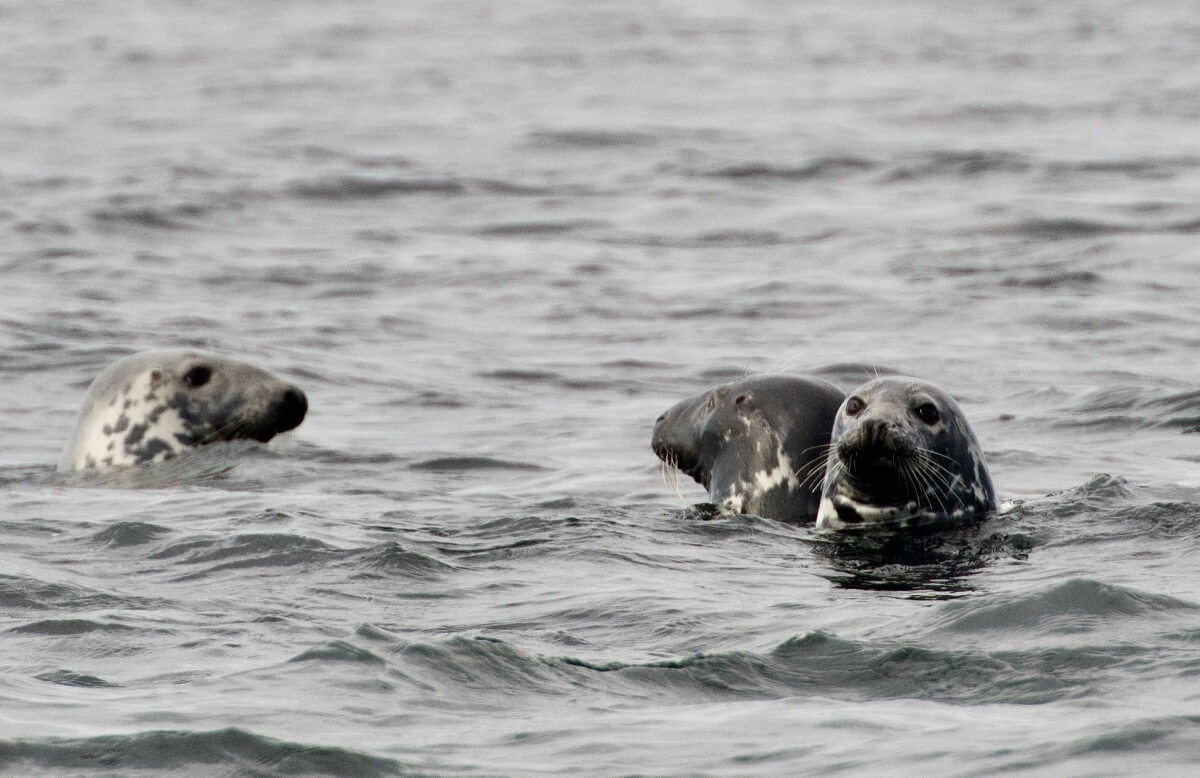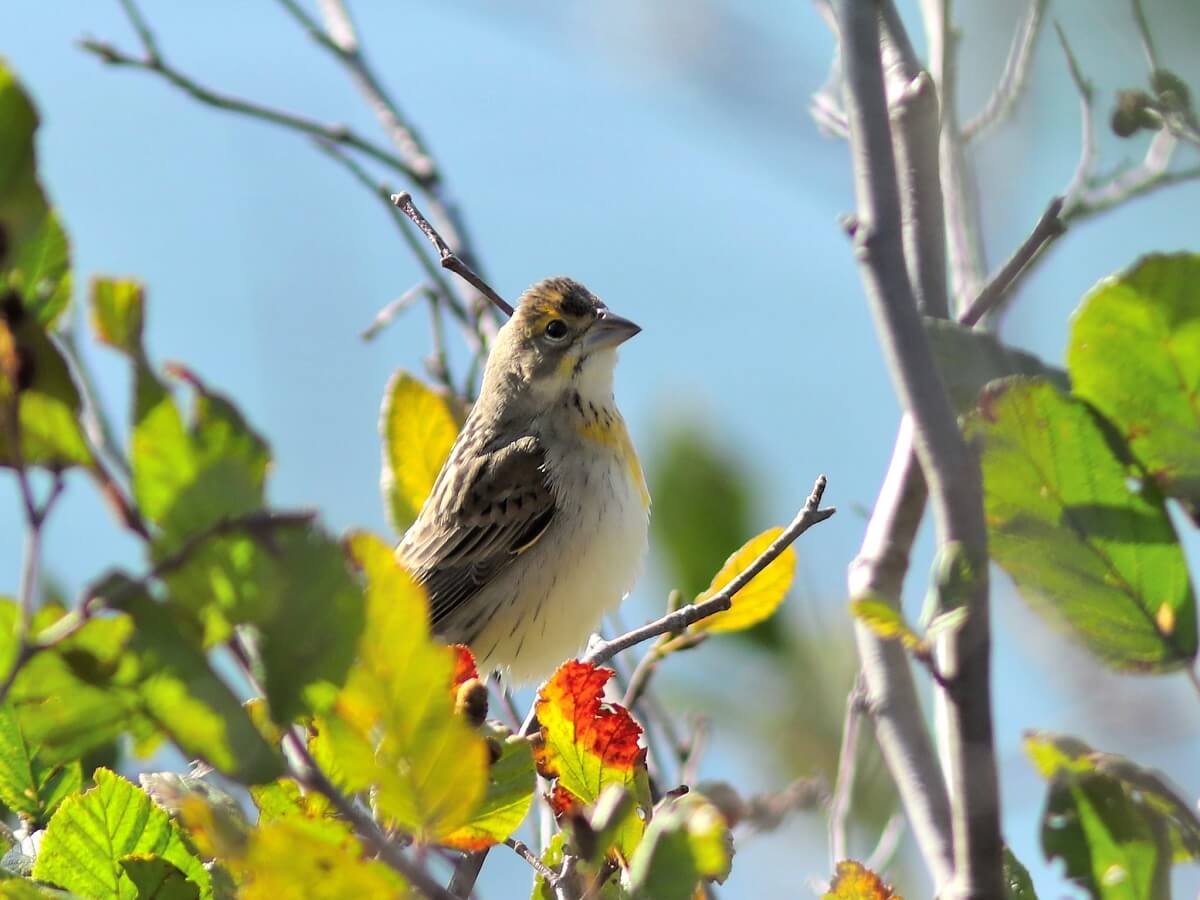Across Quebec, colder weather is gradually setting in. Northerly winds are beginning to blow, announcing the arrival of fall and with it, increasingly chilly temperatures. All week long, strong gusts and high waves have limited the number of outings on the water. Nevertheless, life in the St. Lawrence is still in full swing.
Humpbacks still present
Even if the weather hasn’t been particularly pleasant in recent days, humpback whales have made their presence known! A few dozen individuals were observed in the Estuary between Tadoussac and Les Escoumins, offering quite a spectacle to excited observers with their numerous breaches, pectoral slapping, and long sequences of tail slapping.
Among the humpbacks were several unknown individuals still awaiting identification, as well as a few familiar fins the likes of Tic Tac Toe, Gaspar, Helmet, Sensor (H904) and Piranha (H590). The latter was observed in the company of a calf, which would make this the seventh female-calf pair in the Estuary this season.
As was the case earlier in the season, humpback whales were once again very abundant in the Saguenay-St. Lawrence Marine Park this week, but one individual surprised several observers when it breached off the coast of Cacouna. “That’s a rare sight in these parts!” exclaims Jade Brossard of the Marine Mammal Observation Network (MMON).
For the first time in a few years, a local woman observed three humpbacks from the docks in Port-au Persil. “It’s been a few years since minke whales have ventured here,” she says. The belugas are always loyal to our little happy hour on the docks, but we were also saddened by the absence of darker backs. For the past two weeks, in addition to “white whales,” we have been seeing minke whales and seals. But then, what a surprise! One of the humpbacks even approached within 10 m of the wharf!
The abundance of humpbacks in the region is subject to a great deal of theories and speculation. The population’s recovery following the ban on whaling certainly plays an important role, but shifts in the distribution of food resources might also be a factor. Is there an exceptional amount of food in the Estuary this year? Or are the stocks in their other feeding grounds lower than usual? Hard to say.
On the other hand, other rorqual species have become a little more discreet in recent days. Minke whales as well as a few fin whales have been seen off Les Escoumins, though blue whales have been conspicuous by their absence. “There are no big blasts on the horizon, but I did see harbour porpoises and minke whales,” notes a regular observer based in Baie-Comeau.
In Gaspé Bay as well, humpbacks have been the most frequent finds during the few excursions that were able to take place this week. However, Atlantic white-sided dolphins and harbour porpoises have also been observed there, in addition to minke whales and the occasional fin whale. In the Mingan Archipelago, inclement weather severely limited trips out to sea. Fortunately, there have been grey seals by the thousands on the rocks of the islands!
Lingering sperm whales?
Having electrified and amazed whale enthusiasts last week, the five visiting sperm whales sighted off Les Escoumins left their mark before disappearing below the waves. However, a number of observers and captains suspect that at least one of them is still in the waters of the Estuary. A report has come in to us of a long dark back off Les Bergeronnes that disappeared below the surface and was not seen thereafter, suggesting that it took a very long dive.
Belugas on the move
Near Rivière-du-Loup and Cacouna, belugas are still present, but are becoming increasingly sparse. Like every fall, they have embarked on their seasonal migration and are moving downstream.
Over the course of the week, other interesting, non-beluga observations have also been received! A pod of around 20 harbour porpoises made an appearance off Cacouna for the first time in a few weeks. Not to mention the huge groups of harbour seals along the coast, from Kamouraska to Cacouna! On the South Shore, it’s truly their season!
Migratory birds take wing
Belugas aren’t the only ones on the move lately. With temperatures dropping, migratory birds are beginning their great annual southbound journey that takes them through the skies of Tadoussac and Cap-Tourmente! At least 50 different species have been spotted, much to the delight of banders and volunteers.
Additionally, at the Tadoussac dunes, peak migration for birds of prey is quickly approaching! Although not ideal for whale watching, northwest winds should make for excellent raptor movements!
Pre-hibernation feast for a black bear
The fast approaching winter doesn’t just affect birds and cetaceans. Bears are starting to put on weight in anticipation of their long winter slumber. In Rivière-au-Tonnerre, one bear discovered a particularly nutritious meal: a minke whale carcass. The flesh of cetaceans is very high in fat, which makes them a valuable find for a hungry bear. While a whale mortality may sadden marine mammal lovers, it is also part of nature’s natural cycle: its death is the source of life for the ecosystem that it leaves behind.
Where are the whales this week? Observation map
These data were reported by our network of observers. The observations give a rough idea of the presence of whales, but do not in any way represent the true distribution of cetaceans in the St. Lawrence. Enjoy!
Click on the whale or seal icons to see the species, number of individuals observed, additional information or photos of the sighting. To zoom in on the map, click on the icon in the upper right corner. The map works well on Chrome and Firefox, but less so on Safari.
To display the list of observations, click on the icon in the upper left corner.









